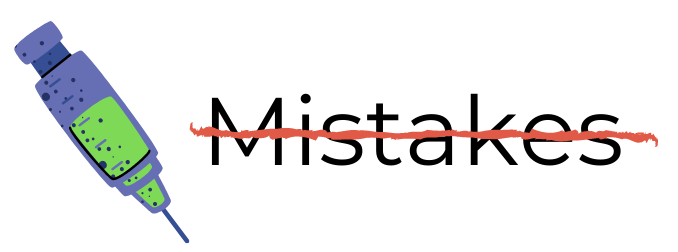Greetings from an undisclosed location in my apartment. Welcome to COVID Transmissions.
It has been 603 days since the first documented human case of COVID-19. 603 was the last year when the Roman Senate is mentioned in historical records. It had been preserved by the various overlords of Italy even after the Western Empire disintegrated, but ceased to function sometime after 603, certainly by 630 when the Curia Julia, where the Senate met, was turned into a basilica by the Pope.
However, 603 also saw the drafting of one of the oldest governmental constitutions in the world, the Japanese 17-article constitution. Japan is set to host the Olympic games starting today.
Speaking of that, today we look at surges in cases in the US in Asia, and also discuss preliminary vaccination safety data in pregnant women.
Bolded terms are linked to the running newsletter glossary.
Keep COVID Transmissions growing by sharing it! Share the newsletter, not the virus. I love talking about science and explaining important concepts in human health, but I rely on all of you to grow the audience for this, which you can do by using this button here:
Now, let’s talk COVID.
Uptick in cases in US, Asia
A few stories from surveillance by CIDRAP in recent days, one being that the US has seen an 11% jump in 7-day average of new daily cases, and a 7% jump in hospitalizaations: https://www.cidrap.umn.edu/news-perspective/2021/07/us-covid-19-cases-jump-amid-increased-delta-activity
This is a combination of several factors, but the bottom line is that it comes from people who are not immune spreading the disease to each other by breathing in each other’s faces, like we discussed last week. In the past month (mentioned in the article) 99.5% of COVID-19 deaths have been in unvaccinated people. Nearly every death right now from this disease is a preventable one. People are dying because of barriers to vaccination, either of their own making or of their circumstances. Thankfully, 67.2% of US adults have received at least one dose of a COVID-19 vaccine. It is not nearly enough, though, and it is very uneven geographically. Many states are lagging behind the average. We need to continue to do better.
Meanwhile, cases are also surging in Asia: https://www.cidrap.umn.edu/news-perspective/2021/07/delta-covid-variant-surges-asia-casts-shadow-olympics
A substantial portion of that is coming from the world’s fourth most populous country, Indonesia, where people are rapidly spreading the Delta (B.1.617.2) variant amongst each other. Additional record highs were seen in places like Thailand and South Korea as well.
This has led to new restrictions in Japan, where vaccination rates are abysmal (25% of the population has received at least one dose) and the Olympics are set to take place starting today. I am concerned about what may come of the decision to go forward with that event.
Preliminary results on COVID-19 vaccination safety in pregnant people
Some of you may remember the CDC V-safe registry, which is a safety monitoring database intended to capture COVID-19 vaccine safety events. This registry was instituted because, frankly, the COVID-19 vaccination campaign in the US is the largest vaccination campaign that the country has ever undertaken. This is sort of trivially true—the US has never had a pandemic situation during a time when its population was as high as it is now.
However, presented with such a large vaccination campaign the CDC rightly decided it needed good methods for collecting safety data from the vaccinated population. Not every safety event can be captured in a clinical trial—when you start to approach 200 million people receiving at least one vaccine dose, you can detect really truly rare events that a clinical trial would never capture.
Something else you can do is assessments of safety in so-called “special populations.” These are people with uncommon health conditions, such as being pregnant or being over 65. Yes, I recognize that these are not at all uncommon. However, they are considered “special populations” for a variety of reasons, mostly related to the difference in health states of people in these populations from the typical population average. Pregnant people have physiological and biochemical changes that frankly, no one fully understands. The same with aging—that has impacts on immunology and many other things that we certainly do not fully understand.
The V-safe database has offered us an opportunity to study such special populations more closely, and recently we got access to some data in pregnant people from this database. These are preliminary safety data captured from the database, and should not be seen as definitive. However, they were published in The New England Journal of Medicine, and I think they are worth discussing: https://www.nejm.org/doi/full/10.1056/NEJMoa2104983
The data show that more than 86.1% of 827 “completed pregnancies” in this cohort of vaccinated pregnant people went to term and resulted in a birth. This means that 13.9% did not. Please note here that, as I understand it, “completed pregnancies” essentially means that pregnancies that ended due to birth, miscarriage, stillbirth, or abortion motivated by medical emergency. Other abortions do not seem to be captured within this dataset. My understanding of these results is that this is totally in line with expectations for any large group of pregnancies, and the authors note that it is consistent with pre-pandemic rates of these pregnancy-completion events.
There is more to pregnancy safety than just completing the pregnancy, however. The health of any resulting children should also be considered. Therefore, other pregnancy safety outcomes looked at focused on the circumstances of delivery and the health of the resulting children. 9.4% of children had preterm birth, 3.2% had small size for gestational age, and 2.2% had major congential abnormalities. No neonatal deaths were recorded. Please note that there was one stillbirth, but that was captured in the earlier figure regarding pregnancies that did not result in a live birth.
Again, the authors note that these numbers were within their expectations based on pre-pandemic figures.
However, it is important to note that these are preliminary results based on an incomplete analysis of the database. Consider this to be a high-level look at the results available to the authors at this time, rather than a comprehensive public health analysis. The authors feel that this work does offer the opportunity to detect unexpected safety signals in this population, but they also note that it is not comprehensive work and relies on the accuracy of patient-reported information. Please note also that this cohort only includes people vaccinated with the mRNA vaccines.
The paper does note that most of the completed pregnancies on which they have data involve vaccinations that took place in the second or third trimester of the pregnancies. There are, as yet, no results involving live birth for people vaccinated during the first trimester. Don’t panic about that—the vaccines have been available for about 6 months. A pregnant person vaccinated in the first trimester would not have reached anything close to full term yet.
Still, this is very encouraging to anyone who is pregnant or who may wish to become pregnant and receive a COVID-19 vaccine during pregnancy. Nothing unexpected is seen in this population at this time, and the suggestion is therefore that pregnant people react to COVID-19 vaccines similarly to the rest of the population.
Of course, anyone making an individual medical decision should speak to their healthcare provider about this if it applies to them. This is research, not medical advice. Still, if you’re going to be having that conversation with your healthcare provider, you might want to talk to them about the results in this paper.
What am I doing to cope with the pandemic? This:
Harvesting dill seeds
Today I’ve begun harvesting the seeds from my dill plant! These will provide delicious dill-y flavor to soups and other foods months from now when the summer is just a memory.
You might have some questions or comments! Send them in. As several folks have figured out, you can also email me if you have a comment that you don’t want to share with the whole group.
Join the conversation, and what you say will impact what I talk about in the next issue.
Also, let me know any other thoughts you might have about the newsletter. I’d like to make sure you’re getting what you want out of this.
Part of science is identifying and correcting errors. If you find a mistake, please tell me about it.
Though I can’t correct the emailed version after it has been sent, I do update the online post of the newsletter every time a mistake is brought to my attention.
No corrections since last issue.
See you all next time. And don’t forget to share the newsletter if you liked it.
Always,
JS








Hi! I wrote a longer comment last week and lost it, so here are the highlights:
1. Thanks for the newsletter! It is useful to me.
2. Having known you a little bit for a long time, I have a big warm feeling for the way you have used your gifts and experience to be useful to your community in a time of great need. I hope it gives you a lot of satisfaction and meaning.
3. Your report on the safety data in pregnancy seems to do a common thing that I hate: ignore the pregnant adult's health and experience in favor of focusing only on the health and survival of embryos, fetuses, and babies.
4. I should have subscribed a long time ago and finally did.